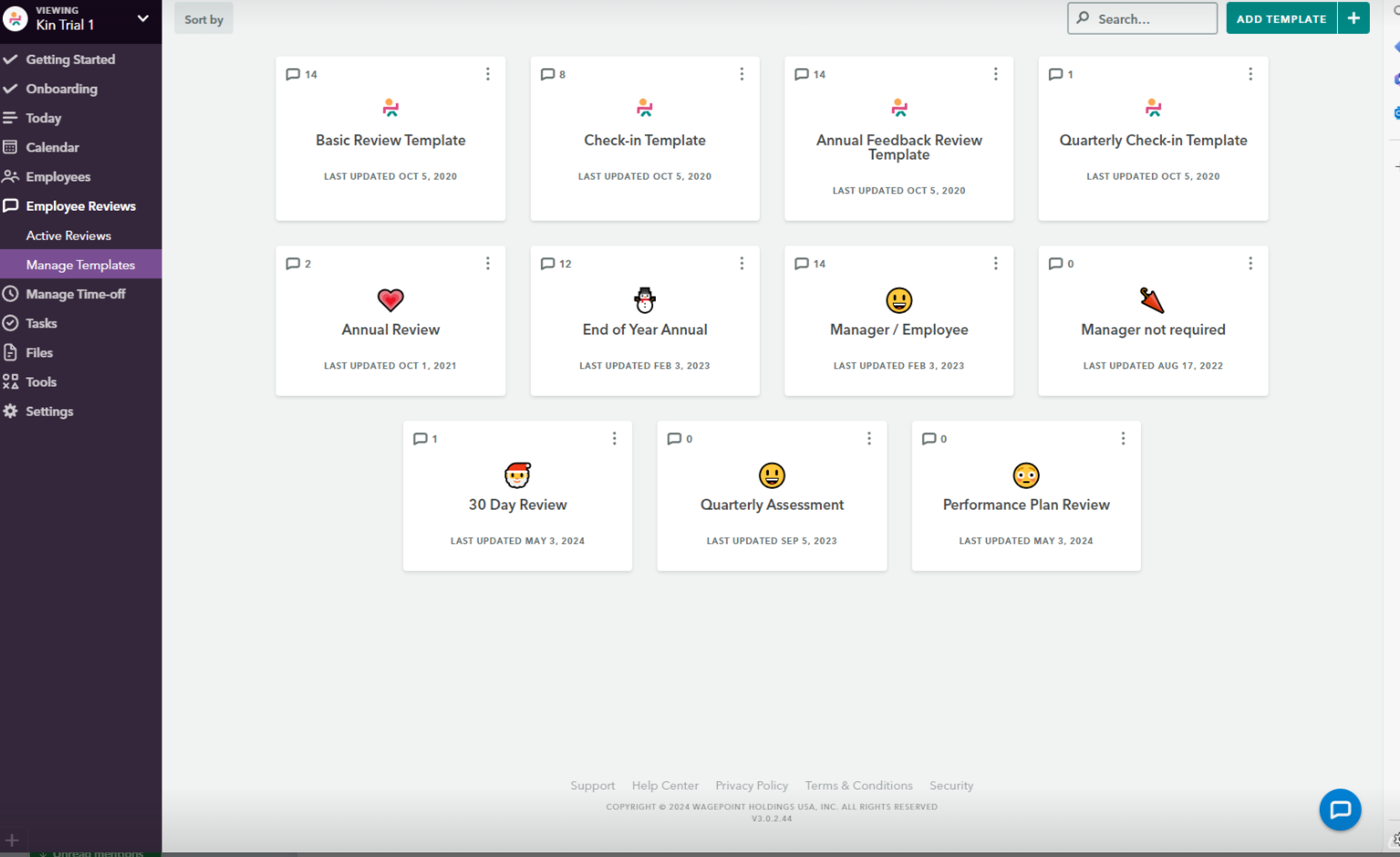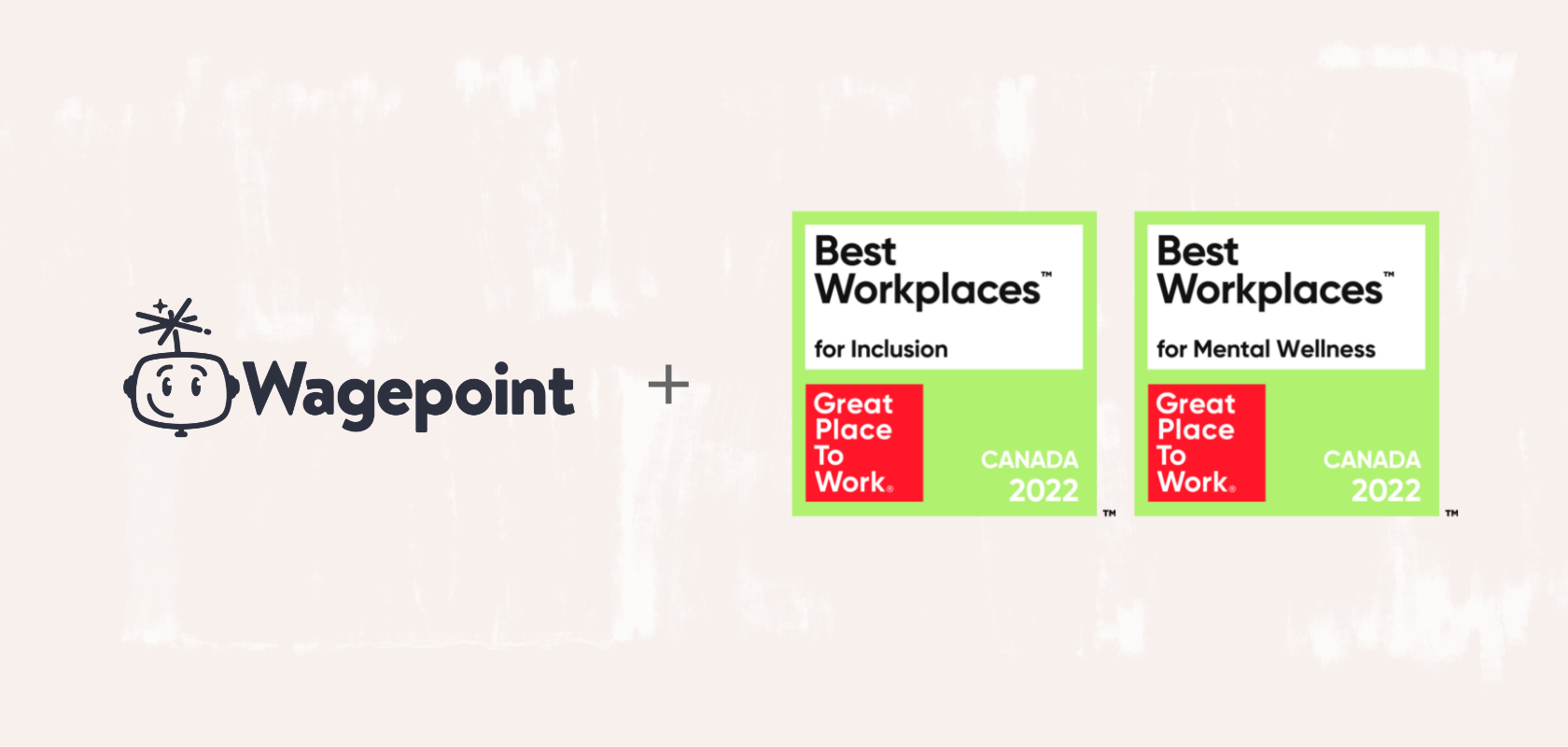Become an insider!
Get our latest payroll and small business articles sent straight to your inbox.
We could explain employee objectives and define several subcategories of employee objectives — and we will — but employee objectives examples will help make all that crystal clear. Without examples, you might understand what they are, but it wouldn’t be as easy to recreate them in your business — which is the actual goal.
So, let’s dive into what employee objectives are, go through some employee objectives examples in different categories, and cover some tips for how to use employee objectives effectively.
Key takeaways
- Employee objectives are performance goals that help employees understand their expectations, have continuous professional development, and aid the company in achieving its business goals.
- There are different types of goals for various positions and areas of professional development.
- These employee objectives examples can help you understand what exactly they entail and how to create effective performance goals for your team members.
- The most effective employee objectives follow the SMART goals format. (The examples in this blog use the SMART framework.)
- There are things you can do to ensure that your employee objectives are best for your employees and entire organization.
What are employee objectives?
Employee objectives are tasks to complete or benchmarks to achieve that are assigned to a worker or team by management or arrived at collaboratively. You might also hear them called employee goals.
Basically, they’re performance goals for your teams and team members. If you want to effectively measure employee performance, you need key performance indicators (KPIs).
There are a variety of goal-setting frameworks, such as SMART goals, Objectives and Key Results (OKR framework) and more that focus on a combination of individual performance goals and organizational objectives. Whichever you choose, they’re useful in performance reviews and give you and your team measurable results to work with.
Setting employee performance goals is a great way to ensure that employees are on track. It also helps guide all employees company-wide to activities that help achieve your business’s performance objectives. Plus, having something to work towards helps maintain employee motivation because they know exactly what’s expected and can strive to achieve it.
Examples of employee objectives.
You can use employee objectives to create specific outcomes and increase particular skills. For example, if you want your marketing and sales team to work better together, you can create employee objectives that move both teams toward that specific goal.
If you’re focused on increasing sales next quarter, you could assign employee objectives that consist of making a certain number of sales. However, if an employee has trouble getting things done without a lot of guidance, you could set self-management goals for them instead. This could lead to them working better on their own to make sales.
This method both increases sales and reduces time spent managing that employee, giving you time to work on other tasks that build toward the bigger picture.
Let’s go over some specific types of goals and employee objectives examples to see them in practice.
Examples of professional growth objectives.
Professional growth objectives or professional development goals are ones that help an employee sharpen their skill set do their job better or make them better suited for their role. It can also involve learning new skills to grow into new roles. The professional growth objectives you set will depend on what the job is and what your goals are for the organization at large.
Professional growth objectives examples:
- Complete a course in data analysis this month.
- Learn to use Google Sheets for data analysis and graph creation by the end of the quarter.
- Watch a webinar on graphic design this month.
- Gain a better understanding of the new Google criteria for search ranking by reading an eBook.
- Gain a HubSpot certification in content marketing by the end of the year.
Examples of problem-solving objectives.
Problem-solving objectives are goals to do with fixing issues when they arise. These can look different depending on the employee’s role in the company and the kind of problems your business tackles. These goals will help you measure improvement in the employee’s ability to solve problems more effectively.
Problem-solving employee objective examples:
- Decrease the length of the average tech support call by two minutes this quarter.
- Decrease abandoned carts by reducing friction in the checkout process by March.
- Reduce the number of support touchpoints the average customer has before a support ticket is closed.
- Identify the possible causes of the high bounce rate on the product landing page and A/B test them to find a solution that decreases the bounce rate by 5% by the end of the month.
- Complete a course on problem-solving aimed at helping you better think outside the box by the end of Q3.
Examples of collaboration objectives.
Collaboration objectives are a type of goal setting that centers around helping team members work better together. The last thing you need is to have a bunch of employees or teams working so independently that they’re missing important details and opportunities. Data silos can only happen without a collaborative approach and team alignment.
Collaboration objectives examples:
- Work together as a team to increase conversions by 5% this year by improving web copy.
- The sales team and marketing team need to align their strategies to increase sales revenue by 20% this quarter.
- The sales team and marketing team will create a sales script and answers to anticipated objections this month.
Examples of self-management objectives.
Self-management is the ability to be self-motivated, start tasks without being asked, organize responsibilities and tasks into a logical order, have good time management and be accountable to yourself and the tasks and deadlines you set.
A person with good self-management skills doesn’t need a manager constantly checking in and explaining the next step, they figure out what comes next and start on their own.
This is beneficial in many ways. Not only does it make employees more efficient, but it has a ripple effect, making the company more efficient. Plus, you don’t have to waste resources on micro-managing employees. It saves time and frees up resources like project managers to work on other tasks rather than looking over employees’ shoulders.
Self-management objectives examples:
- Complete a personal development course on self-motivation this month.
- Choose a project/task management app that works for you and organize all your projects and tasks in it by the end of the quarter.
- Come up with three ways to keep yourself accountable for your responsibilities and deadlines and present them in our meeting at the end of the week.
Examples of leadership/management objectives.
Leadership and management objectives are the types of goals that help employees in management or team leader roles — or who you want to eventually move up to such a role — to be better leaders and manage employees more effectively. Not everyone is a natural leader. However, they may have other valuable skills that make them a prime candidate for promotion to a management position.
Even employees who are natural leaders can stand to benefit from consistent professional development in this area. Learning to use more leadership tools and methods gives employees a larger bag of tricks to draw from.
Leadership/management objectives examples:
- Complete a course on effective team management this month.
- Reduce turnover in your department by 10% this year by meeting with employees to discuss job satisfaction and finding ways to increase employee motivation and happiness.
- Implement an employee feedback system that allows team members to share their ideas and report issues this quarter.
- Work with your team members individually to come up with some performance goals for each of them and implement weekly or monthly check-ins to track progress by the end of the month.
Examples of soft skills objectives.
Soft skills goals are employee performance goals that focus on cultivating strong people skills and personal attributes associated with top performance. Interpersonal skills include things like good communication skills, problem-solving skills and teamwork. These can be helpful any time they need to interact with others.
Soft skills can also include more internal personality traits or skills related to how someone works. These can be things like ambition, integrity, work ethic and adaptability. Some of these are easier to teach and instill than others. However, all these skills are extremely useful and applicable to every position at every level.
Soft skills objectives examples:
- Take a course on conflict resolution this month.
- Read How to Win Friends and Influence People this month to learn negotiation skills.
- Practice active listening on sales calls to increase sales by 10% by the end of Q4.
- Increase sales of products near checkout by 5% this month using upselling tactics.
Examples of creativity objectives.
Creativity can play an important role in a business. Creative employees can do the typical creative jobs like graphic design, writing website and ad copy as well as building company sites and apps. However, even employees with jobs not typically considered creative can benefit from professional development of creativity skills.
Creativity is also how companies innovate products and services, come up with new ways to do things and adapt to industry changes. Thinking outside the box has always been valued by businesses. However, these days, with a rapidly changing digital landscape and a constant need to pivot effectively, it’s even more important.
Creativity objective examples:
- Implement a system for your team to submit feedback on problems and inefficiencies in your department by the end of the month.
- Improve process completion time by 5% this year by conducting monthly team meetings to discuss submitted issues and brainstorm ways to solve them.
- Work on website copy and A/B test different copywriting and design elements to increase conversions by 5% by the end of the quarter.
- Create a display of LGBTQIA+ books to increase sales by 10% by the end of June.
Examples of objectives for new hires.
Goal setting for new hires will usually revolve around getting them up to speed and working ASAP. Then, their performance goals can move toward task-specific objectives that move the needle on company goals as well. This will depend on the role, but generally, that would be the likely pattern.
Professional development goals can’t really be on the table until they’re fully trained and onboarded, they’re working in the role for a while and you have an accurate assessment of their skills and abilities. Then you’ll know if they need to work on their time management skills, communication skills, problem-solving skills or otherwise.
You need to get a feel for their baseline performance before you can gauge where they need improvement and set measurable goals to monitor their progress. This can help them get up to speed, learn the ropes and slowly ramp up their performance.
New hire employee objectives examples:
- Complete the company onboarding process by next Friday.
- Complete the required employee training courses by the end of the week.
- Shadow a senior team member for the week to learn how to be effective in your role.
- Make a minimum of 20 sales calls on your own during your first solo shift.
- Be ready to work the register alone by the end of the month.
How to set employee objectives.
Setting employee performance goals can be a challenge. The idea is to create employee objectives that improve employee motivation, job satisfaction and overall employee performance. They need to be relevant to your business and the employee’s role, present a challenge but not ask for more than they’re capable of, and give the employee clear expectations so they know what they need to do.
It’s a complex process that takes a lot of thought and hard work. There are some best practices you can follow to help you ensure that your employee performance goals are effective and work well for both your employees and your business.
Align objectives and company goals
Your employees are there to do jobs that help your business, but before you can create effective individual goals, you need to know what your company’s strategic objectives are first.
Think about what your business priorities are for the year. This can include general goals like increased revenue and higher customer retention. However, it’s best to also consider what steps will lead you there. Creating more specific goals like decreasing returns, improving customer satisfaction, shorter customer service calls and more personalized customer experiences will create a clear path to your larger, more general goals.
From there you can break down what progress you need to make each quarter and even each week to reach those goals. Once you have a concrete understanding of your company’s long- and short-term goals, you can create employee objectives that align with those goals. It’s all about making progress toward where you want the business to be.
Focus on growth
Performance objectives should be about professional growth and development. Learn their strengths and weaknesses and build on the skills they need most. Constant improvement and growth will lead to exceptional employees and, in turn, exceptional business performance.
It’s also about the growth of your business. Goal setting that focuses on business growth using measurable goals makes progress easy to track. This can be tailored to your business objectives. If you want more customers, more revenue or to expand into different markets, focus on that and tie employee objectives to those goals.
So, what does this actually look like in practice? Well, if you want more customers and more revenue, then you should focus on customer retention since retaining existing customers costs less money, results in more sales and higher revenue and repeat customers tend to make up the majority of a company’s business.
Now you have a general goal — increased customers and revenue — and a more specific goal — customer retention. Next, you need to align that company goal with your employee objectives.
Some employee objectives examples that might be appropriate can include:
- Complete a course to improve communication skills.
- Solve customer support tickets 10% faster by the end of the quarter.
- Improve customer feedback scores by 10% by the close of Q3.
These employee objectives examples all give clear instructions for team members to improve the customer experience in one way or another. These actions will help create better customer experiences and satisfaction leading to higher retention.
Sometimes you need to start with things that don’t directly cause the result you want but lead to it down the line. Think of it as pushing over the first domino or like a game of chess where you need to think three moves ahead.
Use the SMART goals structure (or another structures)
The number one way to ensure that your performance objectives are as effective as possible is to use the SMART goals structure. SMART goals is a goal-setting structure that uses the acronym SMART to remind you of the most important criteria that your performance objectives should meet.
The SMART goals structure requires objectives to be:
- Specific: Goals need to be specific, so everyone understands what exactly they’re expected to do.
- Measurable: If your employee objectives aren’t measurable then you can’t know for sure if you’re making progress, let alone how much.
- Attainable: Obviously, all goals you set for your employees should be attainable. If it’s not possible to accomplish the goal, not only is the goal useless in practice, but it’ll almost certainly have a negative impact on employee motivation and job satisfaction, making team members less likely to work harder and do their best as they see no point.
- Relevant: All employee objectives should be relevant to their specific role, where they have room for improvement and to your overall business goals.
- Time-bound: You can set a goal that’s specific, measurable, attainable and relevant, but if it doesn’t include a time frame, you can put it off forever. For example, telling an employee to increase product sales by 20% without a deadline of any kind makes it impossible to say they failed to meet the objective, they’re just still working on it. Time is an important element for accurate measurement and employee accountability.
The SMART goal-setting system is one framework for setting good employee objectives. There are also other frameworks that people may prefer including, OKRs, PACT goals and FAST goals.
Collaborate with employees
It’s important to work with your employees to create their employee objectives. Giving employees an active role in the goal-setting process is the ideal way to create attainable goals and maximize employee motivation. It can make them feel more in control of their work life and shaping their role while positively impact their job satisfaction.
Each worker will be more likely to feel like a valued employee and an important part of the team who’s trusted to make decisions. This will help instill a sense of purpose. When they see the company performing better, they can take pride in knowing they had a part in that success.
How amazing would it be for every employee to be truly invested in the business and show up every day feeling excited to work towards bigger and better things?
Set employee objectives with People by Wagepoint.

It can be hard to figure out how to onboard new hires, manage all your team members’ hours and set goals, then keep track of them. What if you could do all that in one place?
With People by Wagepoint, you can break up with nerve-racking spreadsheets (sorry, not sorry) and say goodbye to juggling multiple platforms and solutions for all your people management needs. People are complex, but people management doesn’t have to be.
You have all the features you need with People by Wagepoint:
- Employee performance: Good communication is key to successful goal setting and accomplishment. Our employee performance tracking tools allow you to track employee objective progress and work with employees regularly to meet their goals.
- Time-off tracking: Make time-off tracking easy with a simple system for tracking time off requests, PTO balances, and plans.
- Employee data management and file storage: People create a lot of data, and you have to keep it somewhere. People by Wagepoint gives you one secure place to keep it all without dizzying spreadsheets or infinite boxes of paperwork. Store all your employee data and access it from anywhere.
- Employee onboarding: When you bring in new hires, there’s a lot you have to remember and do. With our templated tasks, files and customizable onboarding pages, you can get your new employee process to run smoothly without the fear of missing something.
- eSignatures: The hiring process comes with contracts and documents that can be a real pain. Having a system that allows signing and initialing electronically gets rid of the printing and scanning rigmarole.
People by Wagepoint has everything you need. Request a demo to see it in action for yourself or get started today with a trial and dive in for free for 14 days.











